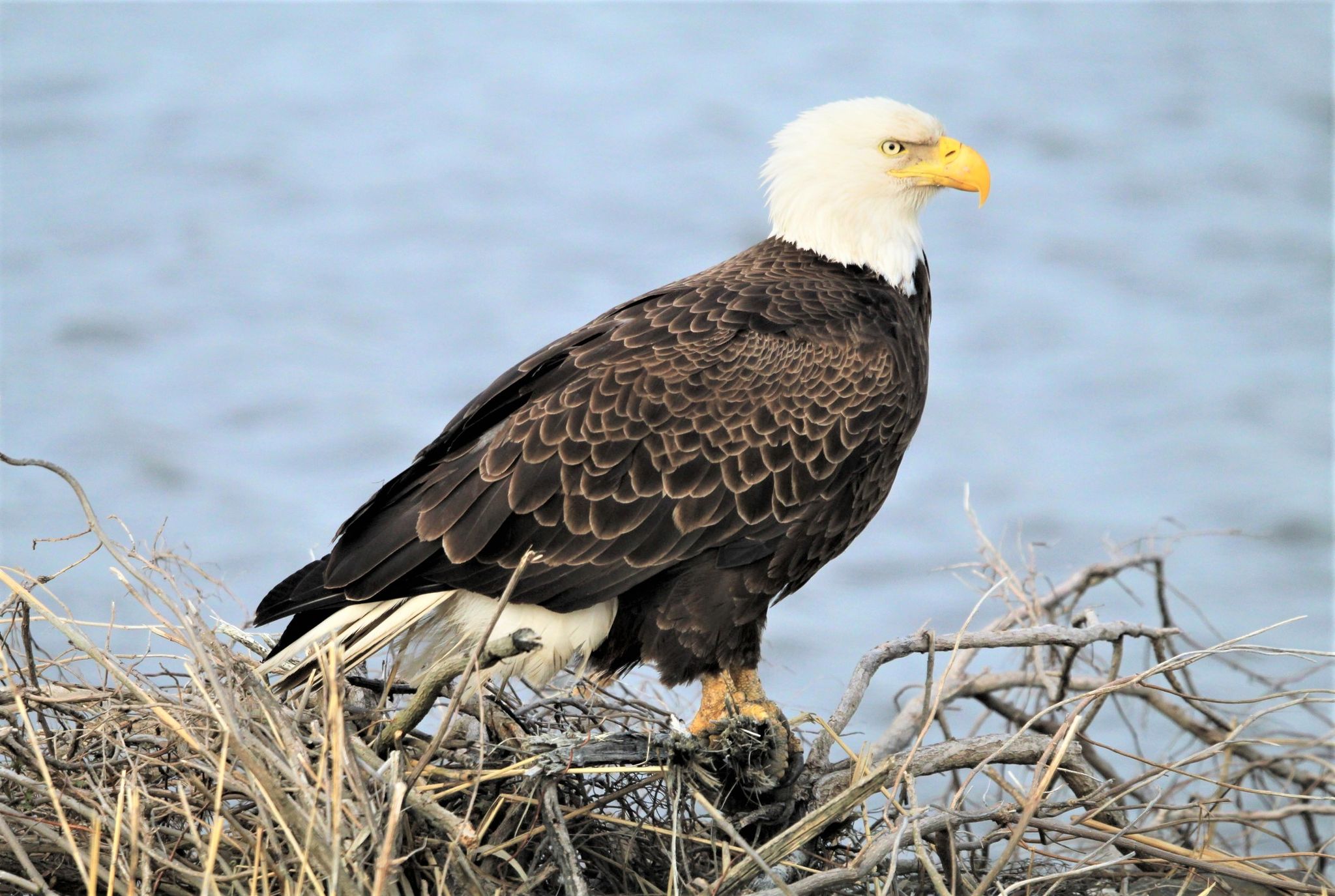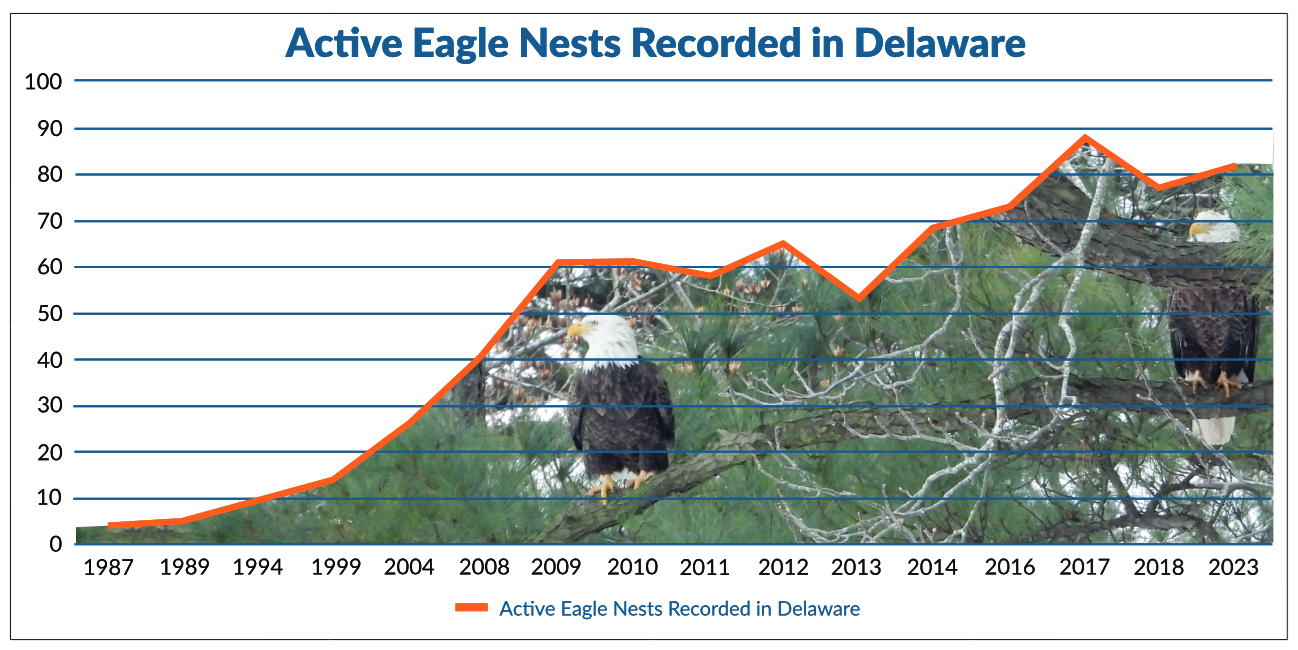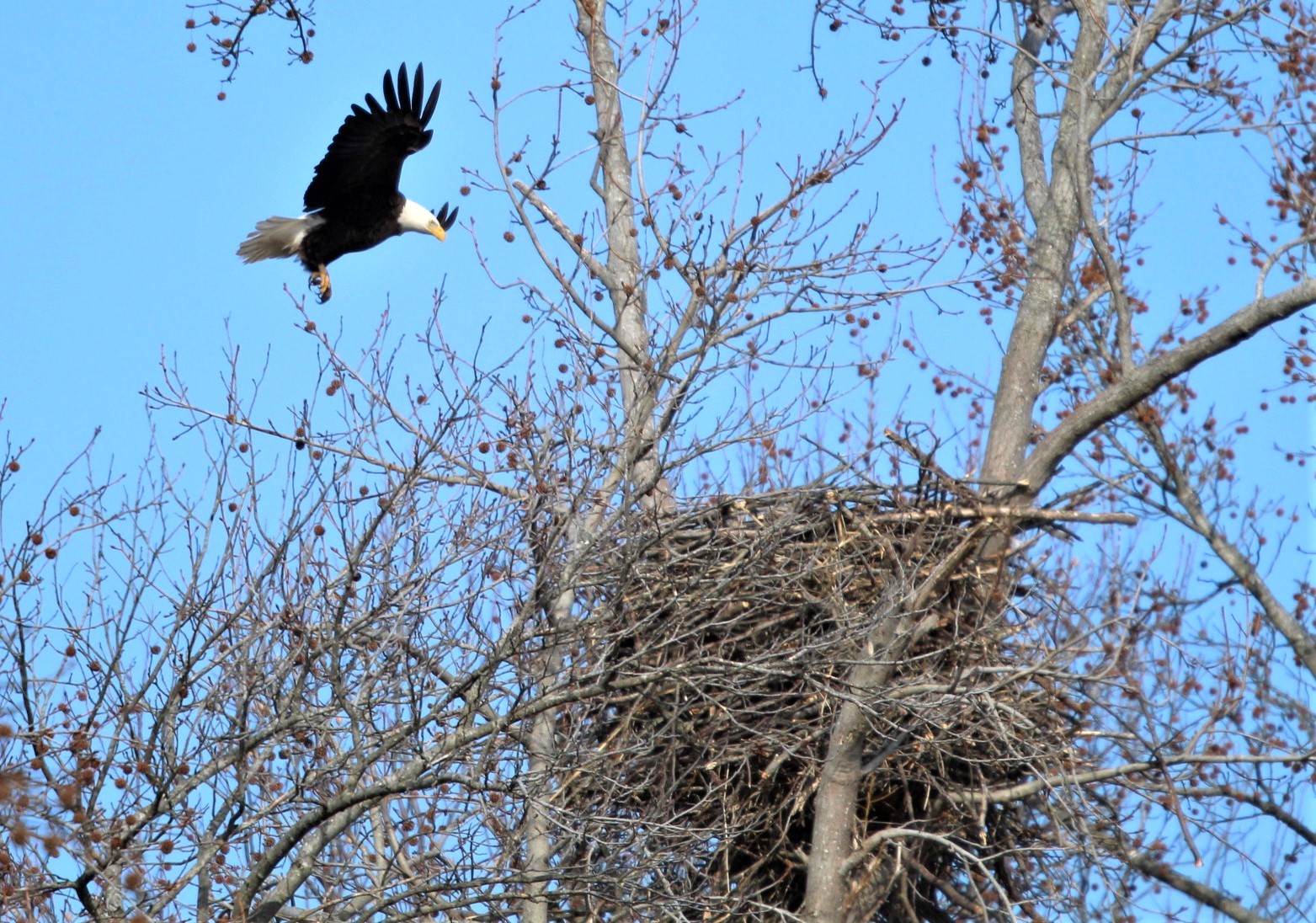Outdoor Delaware is the award-winning online magazine of the Delaware Department of Natural Resources and Environmental Control. Articles and multimedia content are produced by the DNREC Office of Communications.
Practically every American knows our country’s national bird is the bald eagle. But while the eagle has over the years come to be viewed as one of the United States’ main symbols, the species was actually in danger of extinction by the middle of the 20th century.

The decline of the mighty bird due to the pesticide DDT, hunting and loss of nesting habitats was such that by 1963, according to the U.S. Fish & Wildlife Service, only hundreds of nesting bald eagles remained, a decrease in the order of 99% from two centuries earlier.
Today, however, the bald eagle is no longer endangered. Protections put in place by the federal and state governments have done their part and the eagle is now a success story, an icon of resilience and an example of how public policy can safeguard the natural world and its creatures.
Still, wildlife experts keep a close eye on the species, as they do many flora and fauna, to ensure the population remains healthy. To that end, the Delaware Department of Natural Resources and Environmental Control in March of 2023 conducted a thorough survey of potential eagle nests throughout the state.
Over the course of two days, the DNREC Division of Fish and Wildlife’s raptor, grassland and forest bird biologist visited 173 historic and reported eagles’ nests up and down the state.
That biologist, Jordan Brown, spent eight hours a day as a passenger in a small Cessna aircraft checking possible nesting spots and recording the data. In all, 121 nests were confirmed as eagles’ nests, with 82 of those being designated as active. This is an increase from 2018, when the last such survey was performed and DNREC recorded 106 nests, 77 of which were actively being used by eagles.
In 1987, only four active bald eagle nests were observed in Delaware during a survey, according to Brown. Given that, it’s clear the population here has rebounded.
Because bald eagles generally lay their eggs in the winter, Brown observed many parents caring for eggs or young during last year’s search.

To her, the increase represents a step in the right direction for the bird, which is still designated a species of greatest conservation need in Delaware.
“If these species are declining, there has to be a reason, so when we look at these species it’s really important for us to understand human-environmental relationships. Also, the direction that the eagle population is trending may indicate an overall problem with the environment and something that may have a direct effect on human health,” Brown said, noting a drop in the bald eagle population could, for instance, be a sign of pollutants in our waterways.
DNREC maintains a private database of all known nest sites, including ones reported by the public.
Some of the public submissions were outdated or were in fact nests for different kinds of birds of prey, such as ospreys, but the contribution was helpful in identifying where eagles might be.
Although there were fewer active nests by percentage than when the survey was held in 2018 (73% then vs 68% last year), Brown isn’t concerned about that. Some eagles make alternate nests and switch between them from year to year, similar to how some people own multiple homes, she said, describing the overall increase as a positive sign.
Eagles typically build their nests in tall trees along bodies of water, giving them easy access to fish, the main staple of their diet, though they also feed on carrion. These nests can be found in all three counties here. After all, as Brown put it, “you don’t have to go far in Delaware to find a body of water.”

Delawareans who are interested in spotting bald eagles in their natural habit can visit Prime Hook National Wildlife Refuge in Milton and Bombay Hook National Wildlife Refuge in Smyrna, as well as the Nanticoke River in southwestern Sussex County. DNREC’s DuPont Nature Center in Milford is also a great place to check out the majestic avian, with potentially dozens of eagles gathering at one time by the harbor on the beach, unused dock pilings or driftwood.
“People are interested in this species. It’s America’s bird,” Brown said.
While the bald eagle still has special legal protections, it’s come a long way from being on the verge of extinction. Like all wildlife, the species does face challenges in the form of continuing urbanization and climate change, but it endures today as a proud icon of the United States.
If you spot and would like to report a bald eagle nest, you can do so at DNREC’s reporting web page. Submissions will be used by the Department when it conducts its next eagle survey in a few years.
Related Topics: animals, bald eagle, fish and wildlife, nature, outdoor delaware, survey